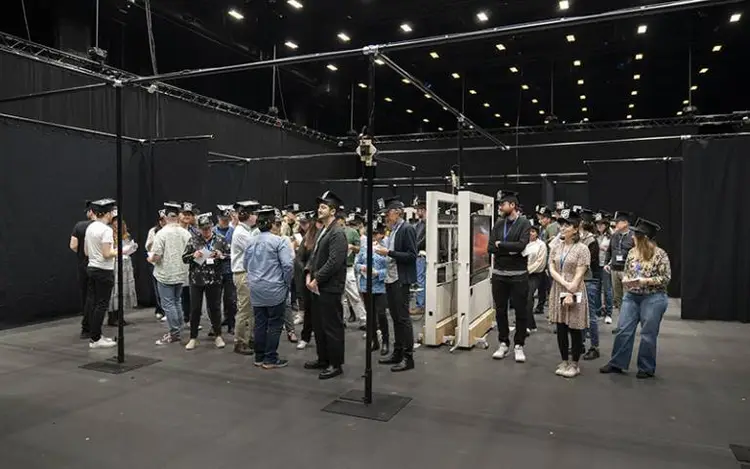UCL ‘art gallery’ experiment aims to inform better design of spaces

More than 100 volunteers were observed navigating a specially designed system of movable 'walls' at UCL’s PEARL (Person Environment Activity Research Laboratory) facility in East London. The area, which covers 15 square meters, was arranged to look like an art gallery. Participants were directed to move from one room to another and complete various tasks, including an evacuation exercise.
Volunteers donned hats equipped with tracking devices and barcodes for camera monitoring. Additionally, some participants used portable electroencephalography (EEG) equipment to record brain activity. The researchers are optimistic that this study, which will carry on through a sequence of additional experiments at PEARL, will yield important information for creating environments like transportation centers, hospitals, and workplaces.
"To explore how individuals find their way in various settings and how their brains assist with this process, we have two options: we can conduct our studies in a controlled lab environment, which may not reflect real-life situations accurately, or we can take our research into the outside world, though this approach makes it more challenging to manage or adjust our experiments," explained Professor Hugo Spiers, the head of the research group at UCL's Department of Experimental Psychology.
"We're creating a realistic environment in the lab, transforming a large area into various settings like a train station, hospital, or school, to support our research efforts."
The project was backed by financial support from the UK Government's Higher Education Innovation Fund and received technical equipment from several companies, including Ubisense, Pupil Labs, Brain Products, and Artinis. Arup provided assistance for the launch event and aims to utilize the findings from this research to create designs that promote more accessible and inclusive environments for its clients.
"Brett Little, who leads the people movement team at Arup, stated that many individuals face numerous challenges navigating places like train stations and museums. He expressed enthusiasm about how this research can significantly enhance our ability to create buildings, cities, and environments that address these issues effectively."
"This marks the beginning of a journey that will deepen our knowledge of how people navigate their environments. It will allow us to design spaces that are inclusive and functional for everyone, regardless of their backgrounds."













































